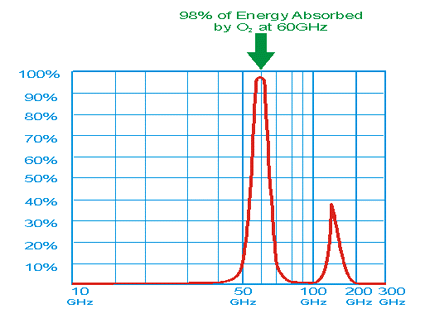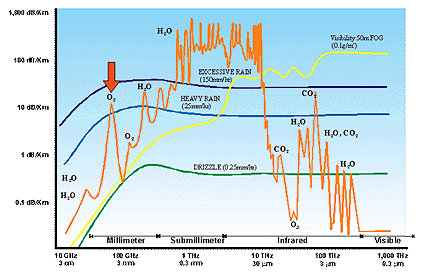WiGig - wireless multimedia content technology

In my article I would like to talk about such an interesting technology as WiGig . From a technical point of view, it will be based on the Wirelss HD technology developed by Panasonic and designed to wirelessly transmit high-quality content to home electronics devices without the use of wires.
Unlike Wireless HD , WiGig will be more versatile and will be able to connect cellular phones, computers, video cameras, music players and home electronics into a single network. The engineers of the WiGig Alliance founding companies say that later the WiGig performance will reach 6 Gbit / s. Under the cut history of the emergence and formation of this standard.
The need for a wireless technology that would be able to transmit large-volume data has arisen a long time ago. In 2001, International Data Corporation planned that profits from Internet commerce in the United States would increase from $ 74 billion in 1999 to $ 708 billion in 2003, while the number of computer users would more than double: from 81 million to 177 million only in USA. Due to the expected growth, reliable fiber optic networks should be deployed as soon as possible.
')
In the United States, less than five percent of all commercial office buildings at that time had access to fiber cable. Due to the high fiber laying costs, up to $ 250,000 per mile, many temporary technologists, including ISDN, DSL, satellite, and microwave communication lines, have been deployed to overcome the “last mile” problem. However, these methods were only a temporary solution, for example, ISDN and DSL require a large bandwidth from the physical medium, and they were simply not designed to use the Internet needs, and the available licensed frequencies, from 900 MHz to 40 GHz, and satellite frequencies, from 6GHz to 30GHz, strongly limited.
Operating at short distances, with high density of installation, wireless communication devices are needed in urban areas and business parks throughout the United States. Most often, office buildings, although not physically connected to the fiber line, are within one half mile of local trunk lines. Wireless communication devices operating at higher frequencies, such as 60GHz, make it much easier for enterprises to connect to the channel, without the material and time costs associated with the physical laying of optical fiber.
At a frequency of 60Hz, the absorption is very high, with 98 percent of the energy transferred being absorbed by the oxygen contained in the atmosphere. Although the absorption of oxygen in 60GHz seriously limits the range, but at the same time eliminates the problems associated with interference.

Figure 1: atmospheric absorption per kilometer
Traditional wireless communication systems operating in the lower frequency range from 900 MHz to 40 GHz often conflict with each other when the interaction becomes too close. This overlap associated with dispersion and uncontrolled propagation of radio frequency radiation through the atmosphere is minimized by frequency coordination, licensing, and by introducing noise reduction techniques such as spread spectrum modulation. Licensing excludes dense placement, due to the limited number of licenses issued to the regions, and the method of expanding the spectrum, proved to be effective only slightly, and the overall noise level increased. In the 60 GHz range, the effects of oxygen absorption and the use of a narrow antenna beam minimize the likelihood of interference between radio stations. Theoretically, 100,000 systems operating at 60 GHz can be located on an area of ten square kilometers without overlap problems.
Weather conditions adversely affect all radio frequency transmissions, especially in the millimeter-wave range, where severe rainfall can cause as many problems as 20dB signal loss per kilometer transmission. When increasing the transmission distance of the radio signal, the decrease in the difference required to compensate for weather effects increases proportionally. Since the radio signal operating at 60GHz is transmitted only over short distances, compensation due to weather effects is not as great as for transmission systems over a distance of one kilometer or more.
At 60GHz, the extremely high level of atmospheric absorption is mainly due to the molecular composition of the atmosphere. Figure 2 illustrates the atmospheric attenuation characteristics for wavelengths from 3 cm to 0.3 mm. In the millimeter wave range, the main absorption occurs by the molecules H2O, O2, CO2 and O3. Since the presence of O2 is quite significant at ground level, its effect on the propagation of 60GHz radio waves is easy to model, more clearly the planning process. Comparing the signal attenuation strength due to weather conditions for 60GHz waves, even for heavy rains, a figure of 5dB / KM is obtained, which is insignificant compared to the losses due to oxygen absorption.

Figure 2: Attenuation in the atmosphere characteristics for wavelengths of 3 cm to 0.3 mm.
Thus, the WiGig Alliance was formed to create a single specification of 60 GHz wireless technologies. Who is in it? The alliance is led by several major Wi-Fi chip makers, along with Microsoft, Nokia and major consumer electronics makers, including Atheros Communications, Inc., Broadcom Corporation, Dell, Inc., Intel Corporation, LG Electronics, Inc., Marvell International LTD., MediaTek , NEC Corporation, Panasonic Corporation, Samsung Electronics Co ,. Any company can participate in the WGA. Prospective members must sign an agreement that provides license rights to use the WGA specification.
And yet, why do we need WiGig? In addition to high definition transmission, high bandwidth and low latency, WiGig can be ideal for several applications, including running games on HD TVs and wirelessly connecting netbooks with desktop displays and storage devices. At least so say the sellers. WiGig might also allow consumers to send video from camcorders to HD TVs without a cable. As it is designed for IP networks and is supported by Intel, Broadcom, Atheros and major consumer electronics manufacturers, according to analysts, there are good chances that WiGig will be ahead of some existing wireless systems.
Different groups of manufacturers are pushing various types of existing home wired networks to switch to HD wireless networks: HomePNA (originally Home Phone Networking Alliance) running on telephone wires, HomePlug Powerline Alliance on wiring and Multimedia over Coax Alliance ( MOCA ) on internal coaxial cables. There are also several high-speed wireless technologies struggling for survival. UWB (Ultra Wide Band) technology has been adopted for wireless USB, and is currently available on some laptops, although some of its main developers and manufacturers have been closed. In addition, there are technologies WirelessHD and WHDI (Wireless Home Digital Interface), with speeds similar to WiGig, each of which will soon arrive on the market.
One of the factors in favor of WiGig is the movement towards integration with Wi-Fi. The fast version of the IEEE 802.11 standard using 60GHz band is also being developed now and chip makers in the alliance are already talking about WiGig as part of a “three-component Wi-Fi” technology that will include 60GHz, along with the 2.4GHz and 5GHz bands already used already used for 802.11a, b, g and n. The idea is that as you move away from the broadcasting point, the speed will drop when you switch from one technology to another.
Intel, Broadcom and Atheros are also hoping to make WiGig a Wi-Fi extension. They also participate in the IEEE group to create a 60GHz standard, called the 802.11AD. This group is in the early stages of developing a new standard. The industry group, a component of the Wi-Fi Alliance, which certifies products based on the 802.11 family of standards, says that WiGig seems capable of complementing Wi-Fi, and that as it matures, there will be opportunities for collaboration between Wi-Fi and WiGig.
And in the end, references to the sources used 1 , 2 , 3 , 4 , 5 , 6 , 7 .
Source: https://habr.com/ru/post/87443/
All Articles